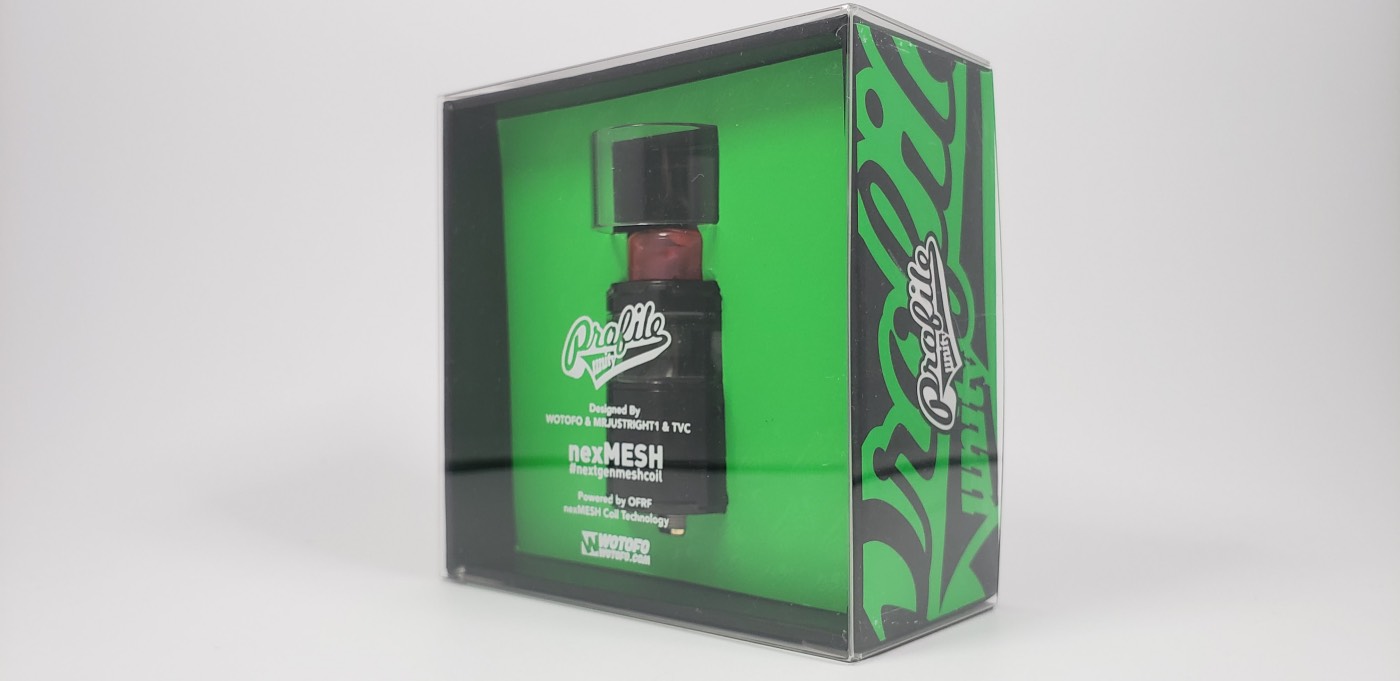
The Profile Unity RTA was sent to me for review from Wotofo. Get it here for $39.99 (affiliate). This is the RTA version of the super popular Wotofo Profile RDA, which a lot of people believed was one of the best RDAs or even one of the best vape products of 2018. And I thought so too. The Profile RDA is awesome (here’s my review of it). So does the Unity RTA stack up? Let’s take a look.
Specs:
- 25mm diameter
- 48.5mm tall
- 3.5ml or 5ml capacity options
- Top Fill
- Adjustable side airflow
- Colors: Black, Gold, S.S. Blue, Rainbow, and Gunmetal
- $39.99 from Wotofo.com
In the Box
- Profile Unity RTA
- Colorful Resin Drip Tip (pre-installed)
- 3.5ml glass tube (pre-installed)
- A spare 5ml glass tube & extension adapter
- Mesh strip bending tool
- Screwdriver
- 2 0.13 ohm nexMesh strips
- 1 6mm diameter cotton wick
- Extra o-rings, screws, and springs
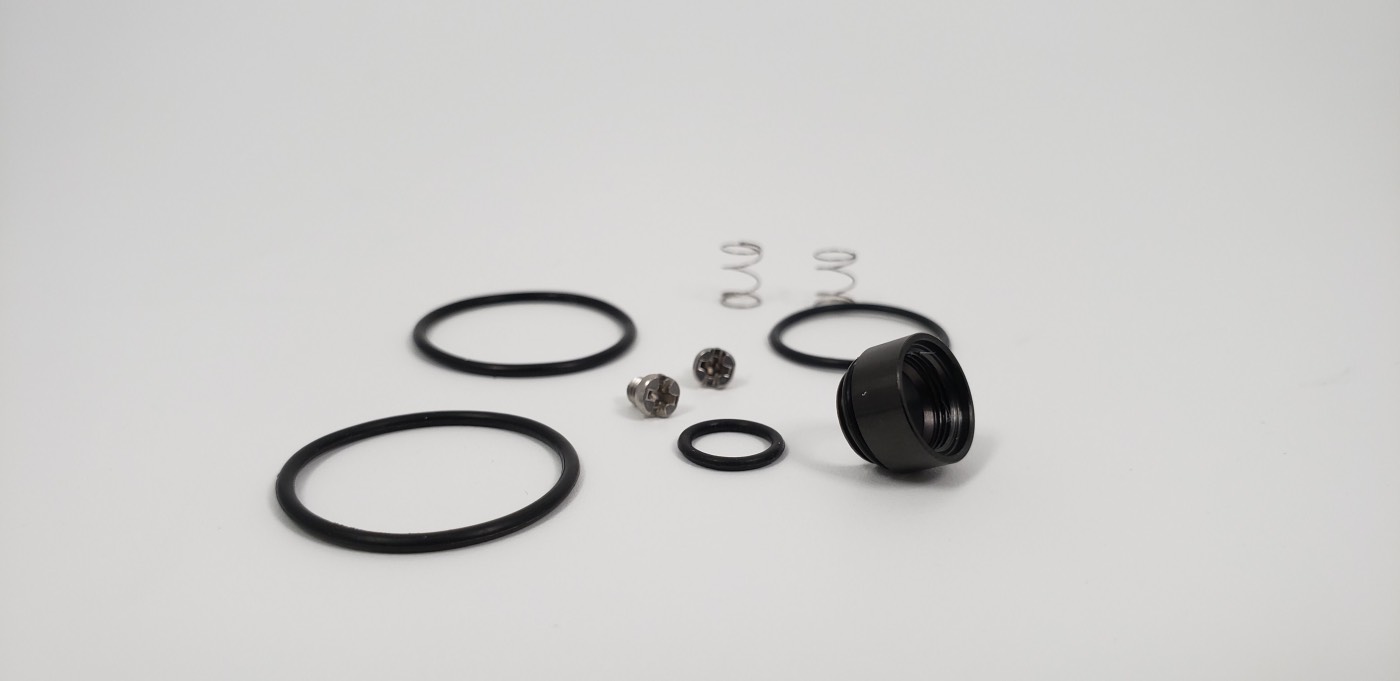
Some Quick Background
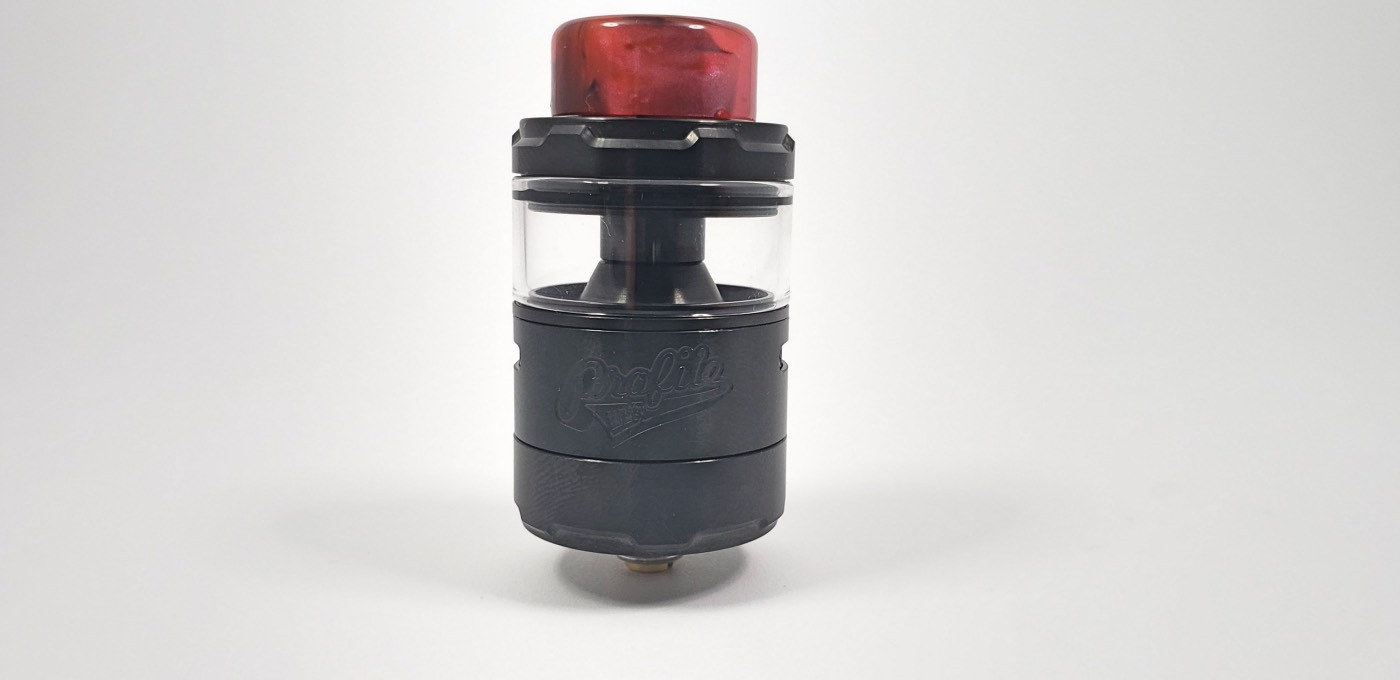
The original Wotofo Profile RDA was developed in collaboration between Wotofo and vape reviewer, MrJustRight1. This new tank, the Profile Unity RTA was also developed in collaboration with MrJustRight1, but also with another popular reviewer, Brian from The Vapor Chronicles.
Drip Tip
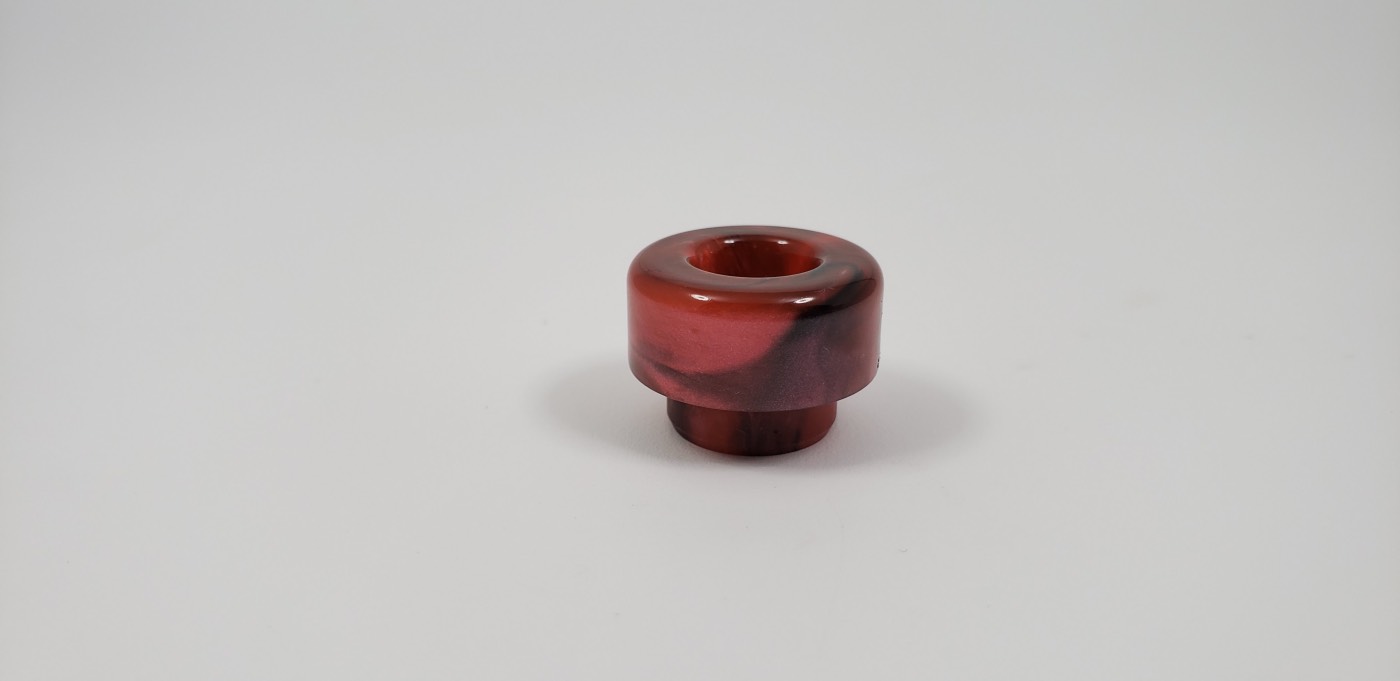
The drip tip is a thick resin drip tip. It’s designed to be nice and comfortable and it is. It’s also designed to provide a nice airy draw and to dissipate heat, and if you’re vaping this at high wattages it works nicely.
It’s just a drip tip, but the thickness is cool and it looks great on the Unity.
Top Cap
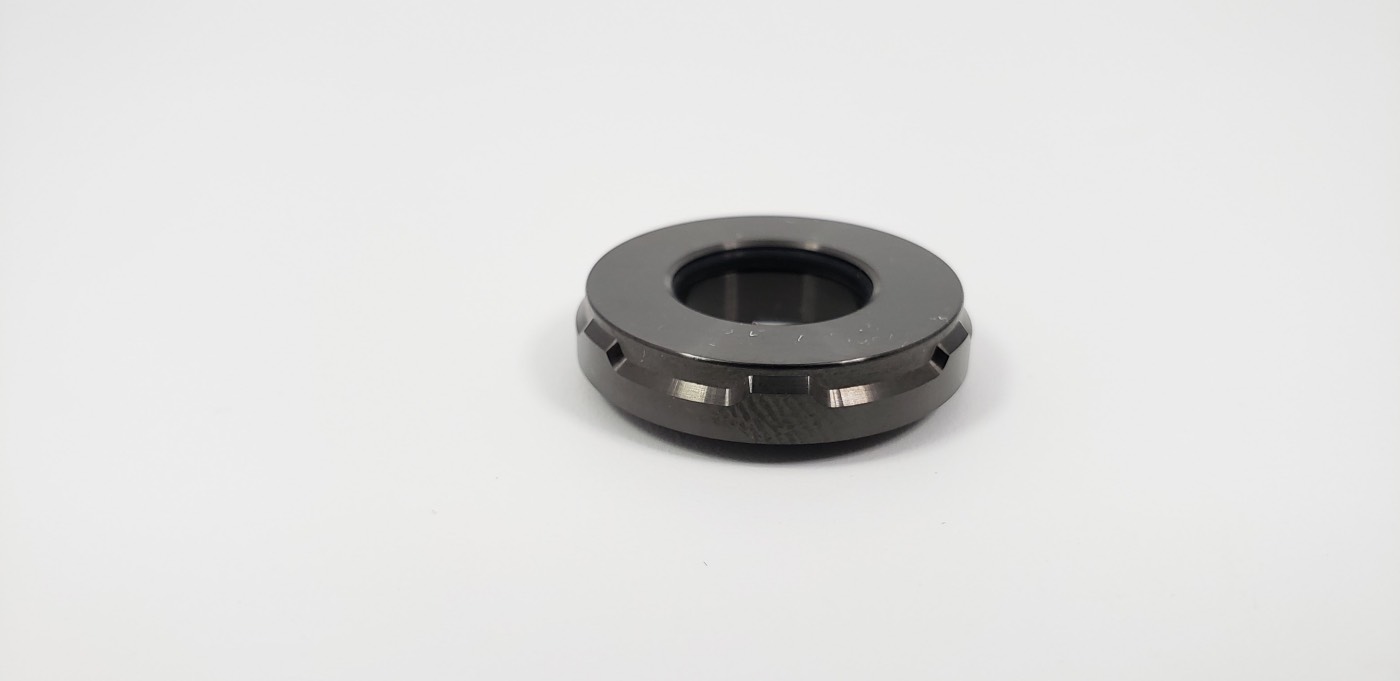
It seems like the trend of sliding top caps are gone and while those types of sliding tops can be handy, they tend to pop open easily or leak. This top cap makes a quarter turn and it comes right off easily. No dealing with tight threads or anything, so it works great.
Take that off and you get access to the large fill ports.
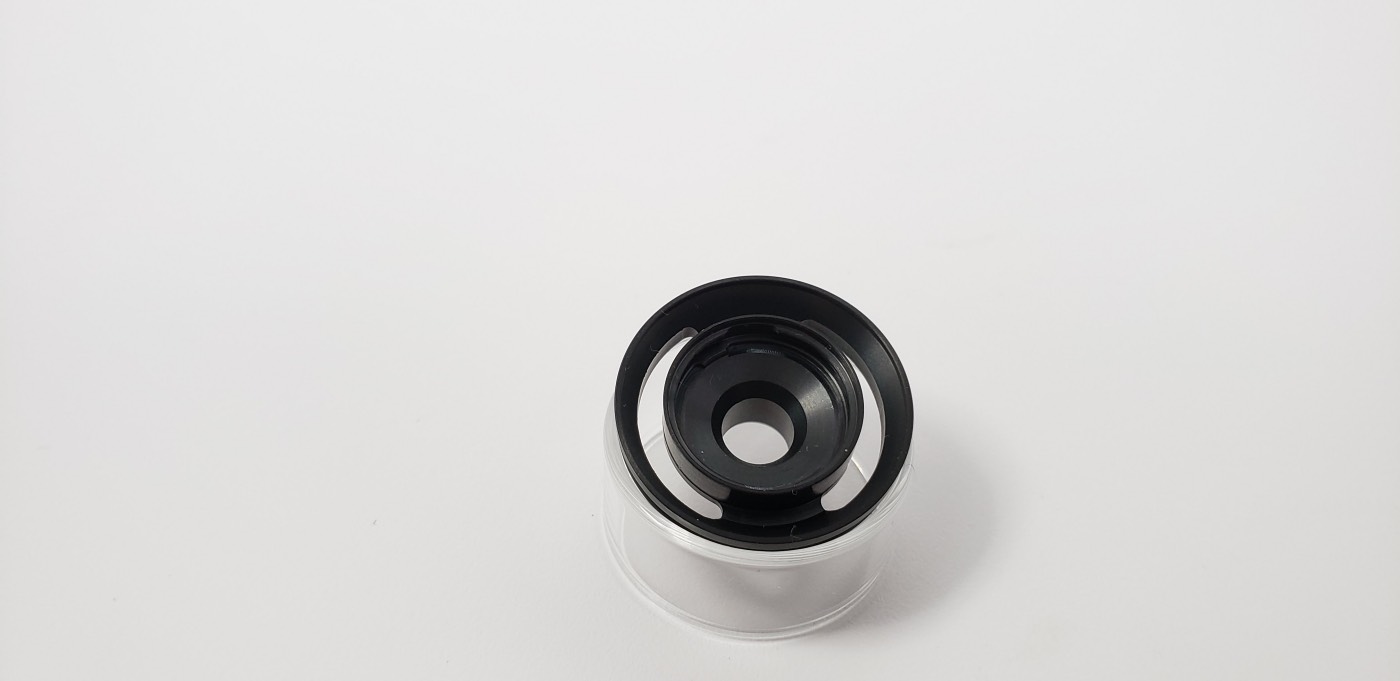
There’s plenty of space to fill this thing up. To put the top cap back on, you’ll need to line up the tabs on the bottom of the top cap with the slots on the top of the chimney piece and then you just lock it down.
E-Liquid Capacity & Extension
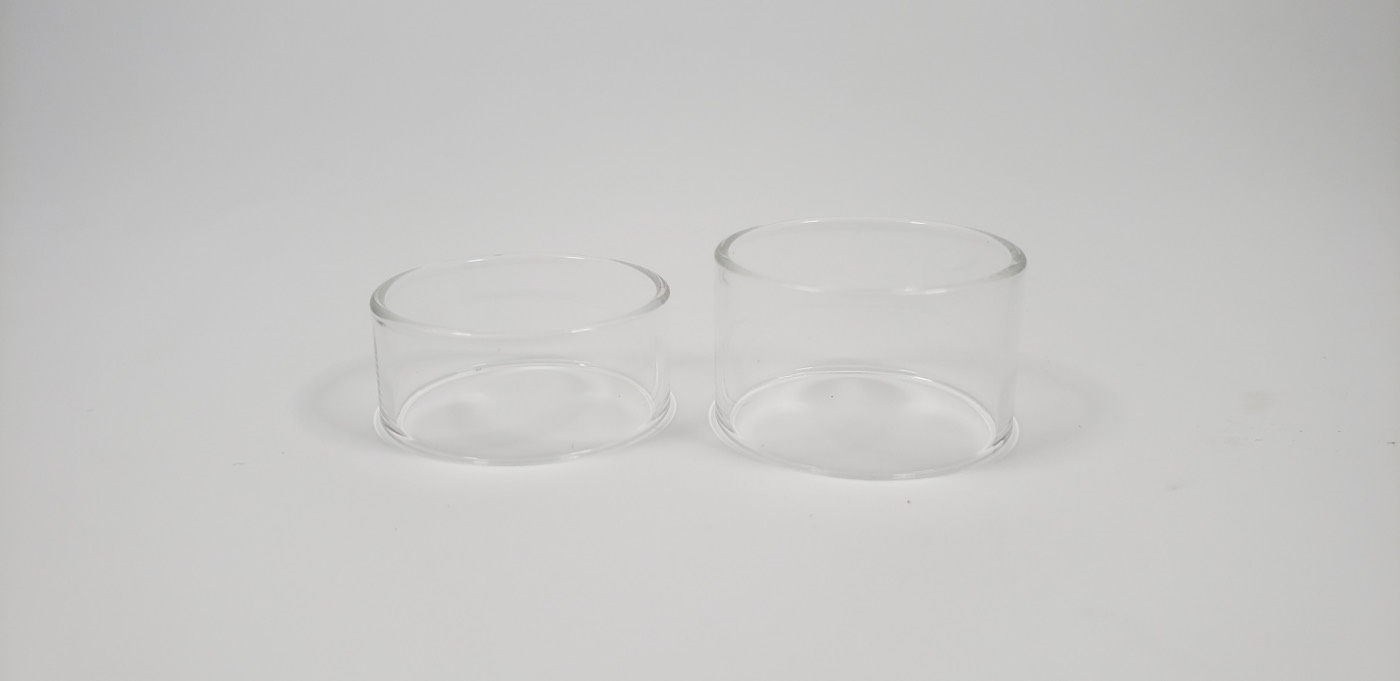
The Unity comes with two glass tubes; a 3.5 ml glass tube preinstalled and a spare 5ml glass tube in the box. Rather than going with bubble glass for the larger tube, they went with a taller glass tube. This is something I like because I’m not a big fan of how bubble glass looks and I also don’t mind the slightly larger length that the 5ml tube adds.
To use the extension, you need to grab the extension piece that comes in the accessories bag.
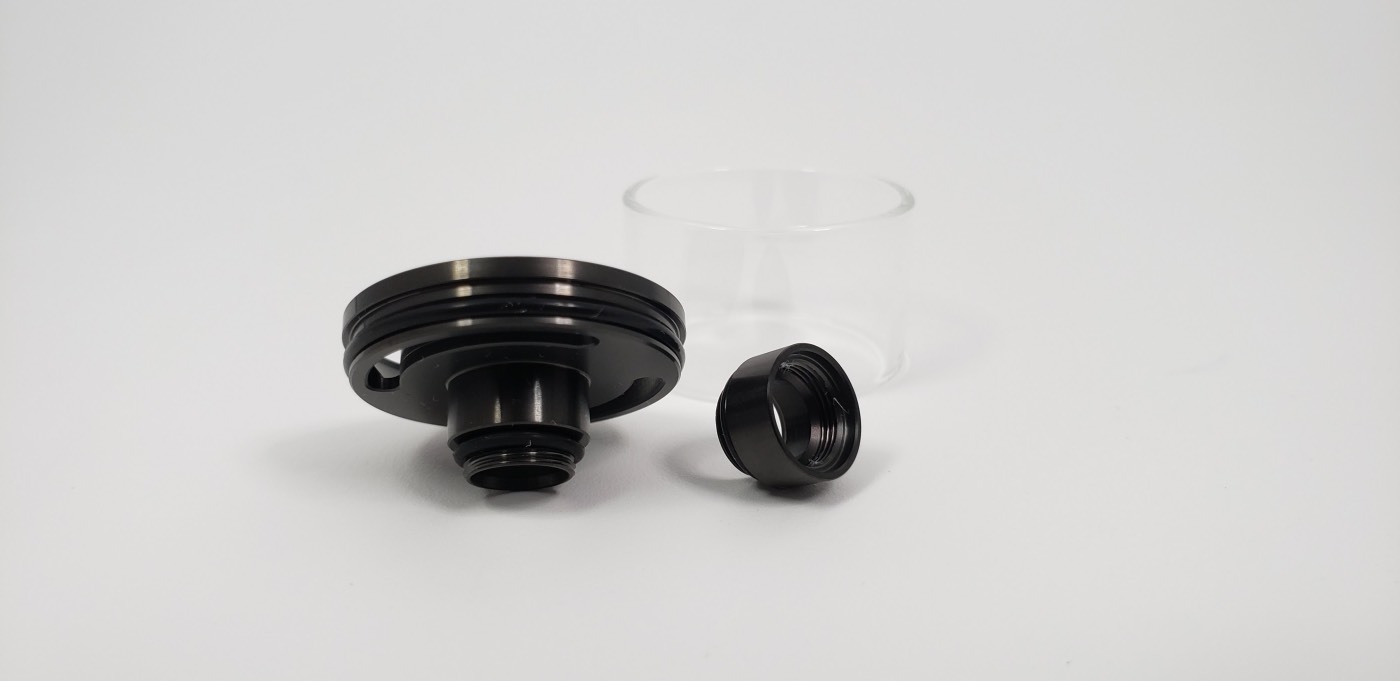
You screw that piece onto the top cap and then you can use the 5ml tube.
Airflow Control and Chimney
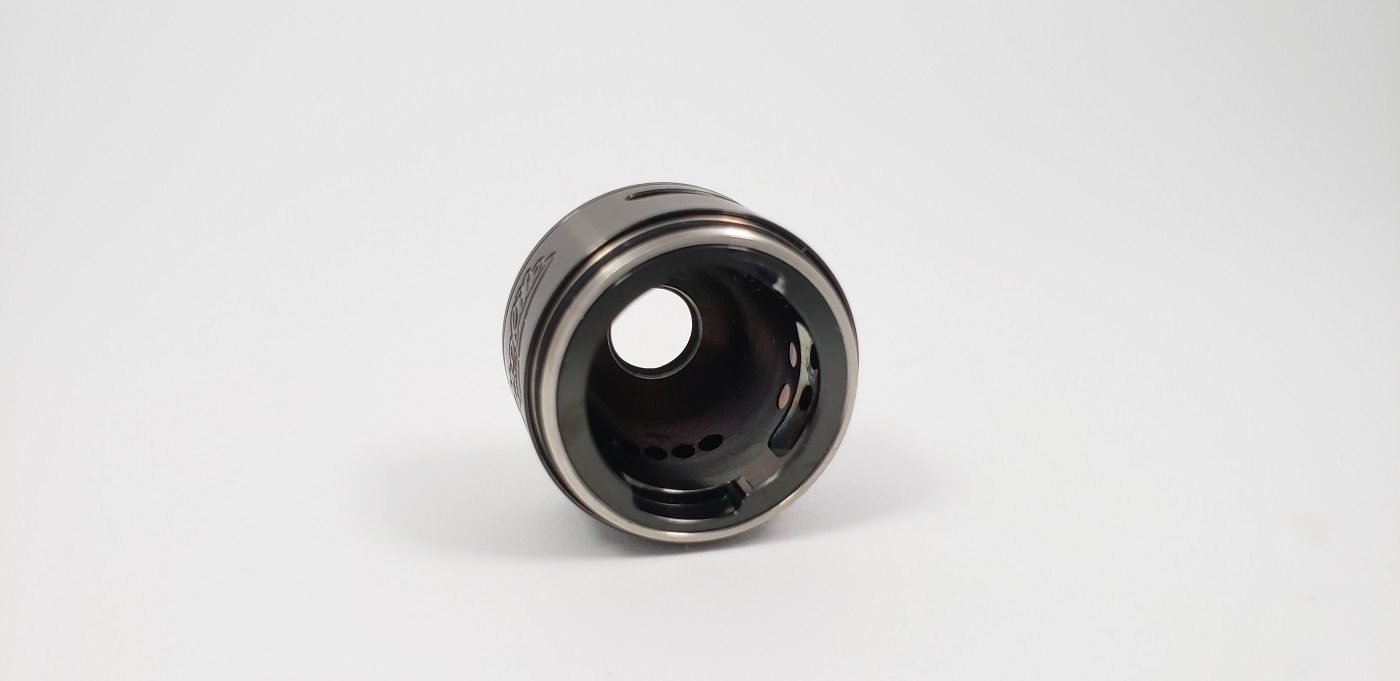
The airflow control and the chimney are one piece. The top cap screws into the top of the chimney and bottom of the chimney/airflow piece screws onto the deck to cover the coils.
The airflow control ring sits at the base of the tank, so this is a bottom airflow tank. The ring moves very smoothly and you have a lot of options to pick from. There are two airflow slots, one on each side, and five airflow holes for each slot.
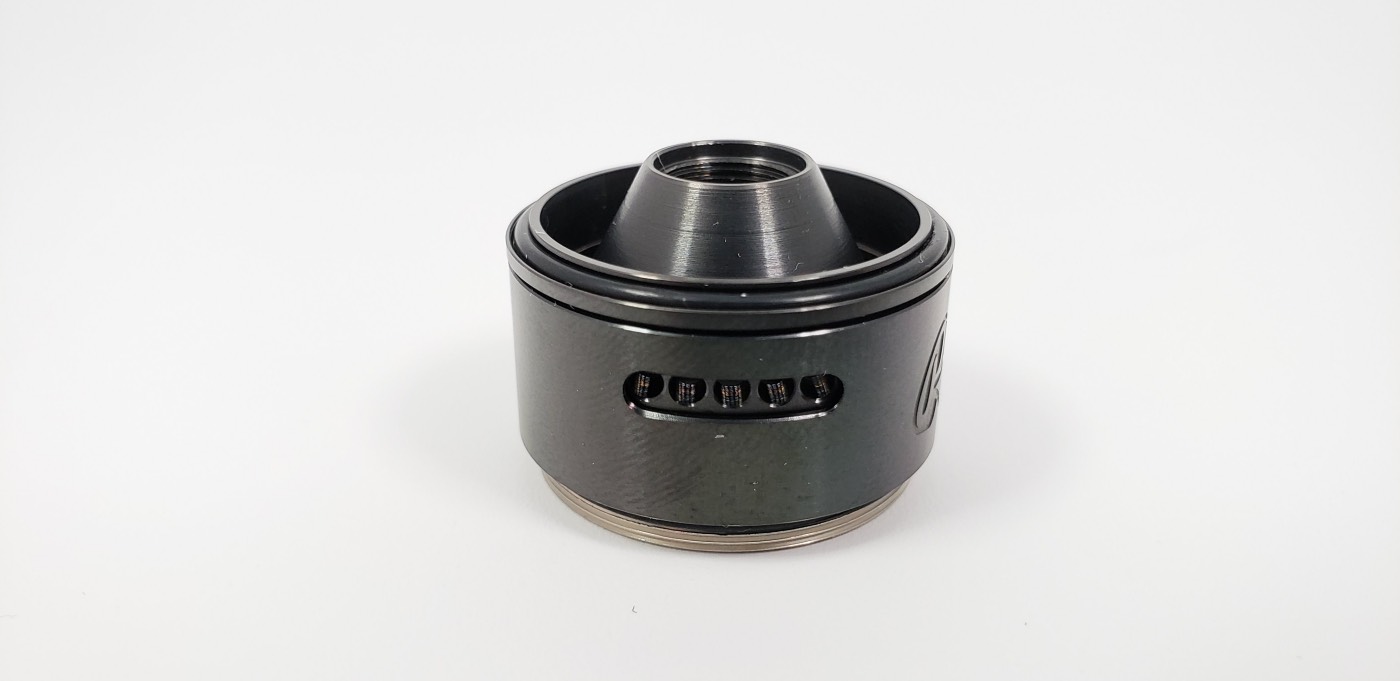
I heard that you can take that airflow control ring off so that you can clean behind it, but I tried and just can’t get it off.
The airflow intake channels are slanted downward, which is good for preventing leaking, although I will say that I do get a little bit of leaking around the airflow holes. It doesn’t pour out or anything, but whenever I pull this out of my backpack, there’s almost always a little bit of liquid around the airflow holes. To be fair, everything in my backpack gets jostled around quite a bit.
So the airflow holes point right at the sides of the mesh strips. It’s a little hard to see how that works from looking at it, but you can see it from the renderings on Wotofo’s site.
And those slots you see on the inside of the chimney are where e-liquid feeds to the deck. That’s a really unique idea.
And if you remember with the RDA, the barrel walls were really thick, which was used to maintain the wide diameter of the atomizer while keeping the inside of the barrel compact so that it would deliver more flavor. It worked great and the same concept applies to the tank. This chimney section is pretty thick. Not as thick as the RDA of course, but it’s thicker than most tanks.
The way the chamber screws onto the deck also makes it so that the airflow is always pointed at the coils. You can’t accidentally position them the wrong way.
The Profile Unity Deck
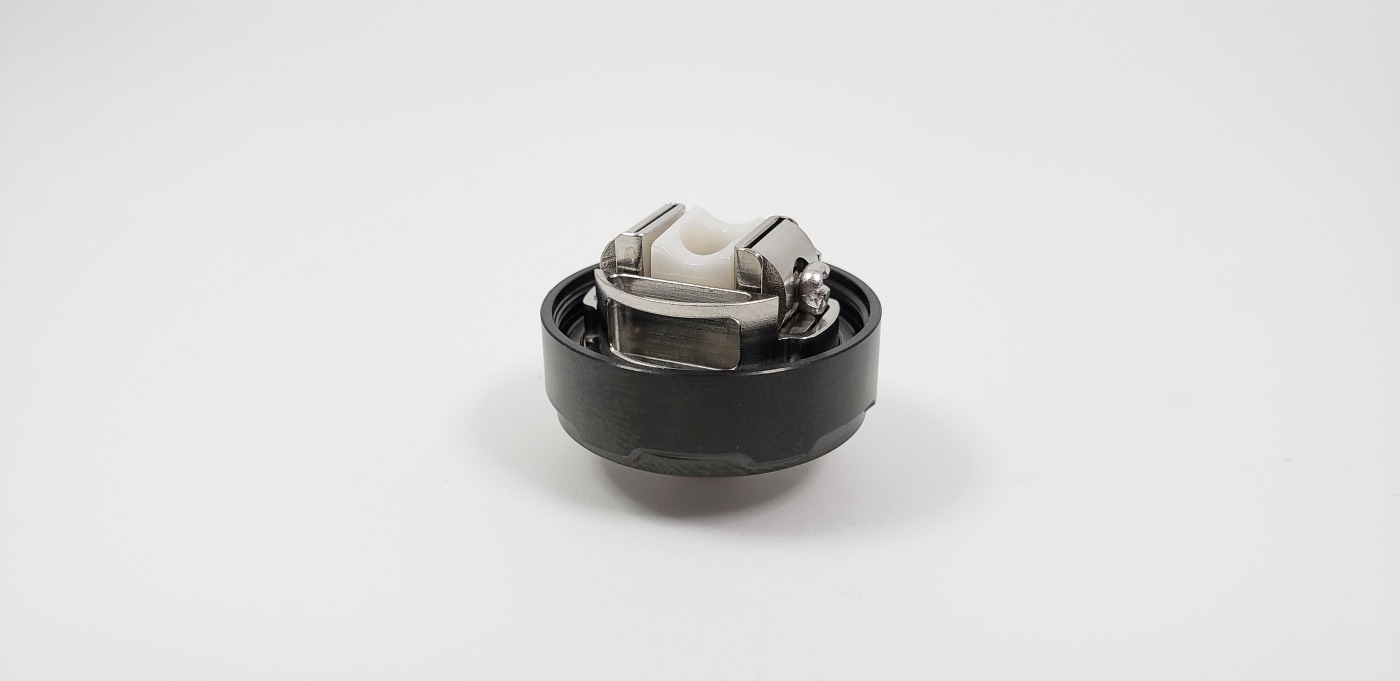
If you’re familiar with the Wotofo Profile RDA, you’ll be familiar with this deck. It’s designed practically the same with the same post design and spring-loaded middle piece.
You have your posts on either side, perfectly designed to fit Wotofo’s pre-made mesh strips.
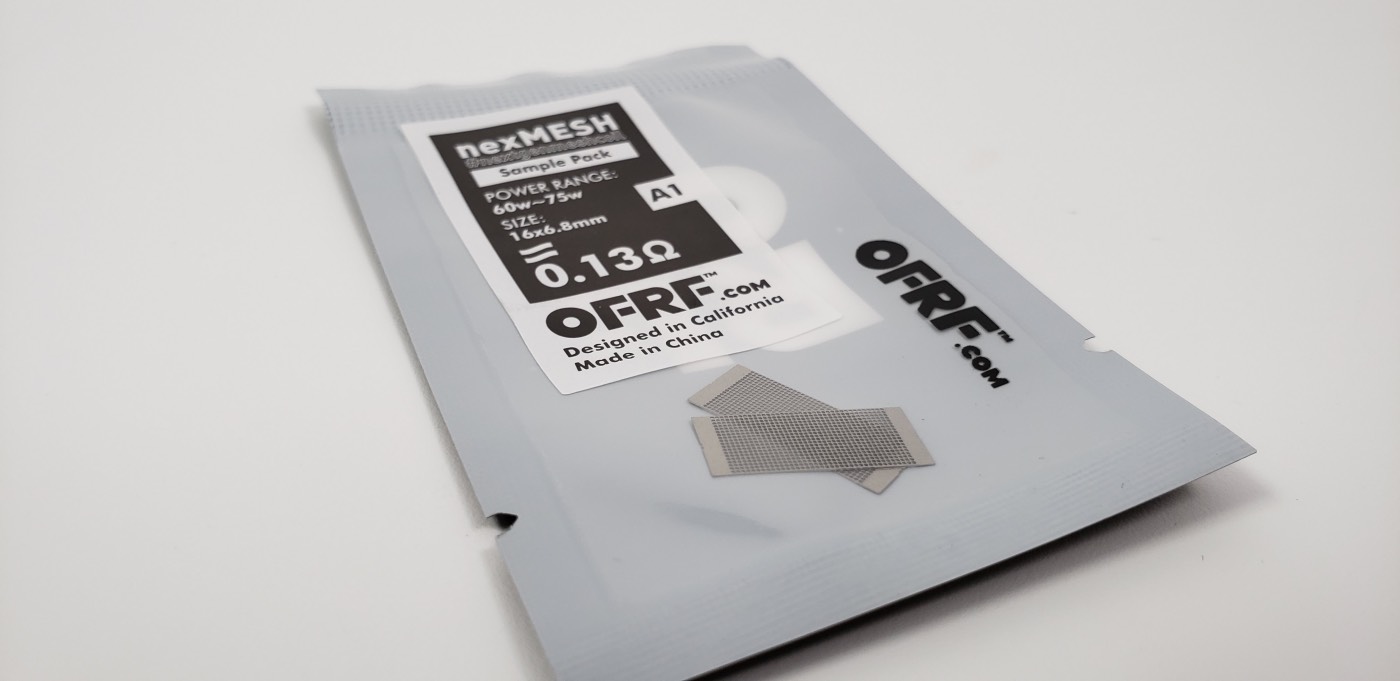
To prepare your mesh, you simply wrap it around the mesh tool that comes with the tank so that the strip is evenly rounded, slide the mesh strip into the post slots, and then tighten it down.
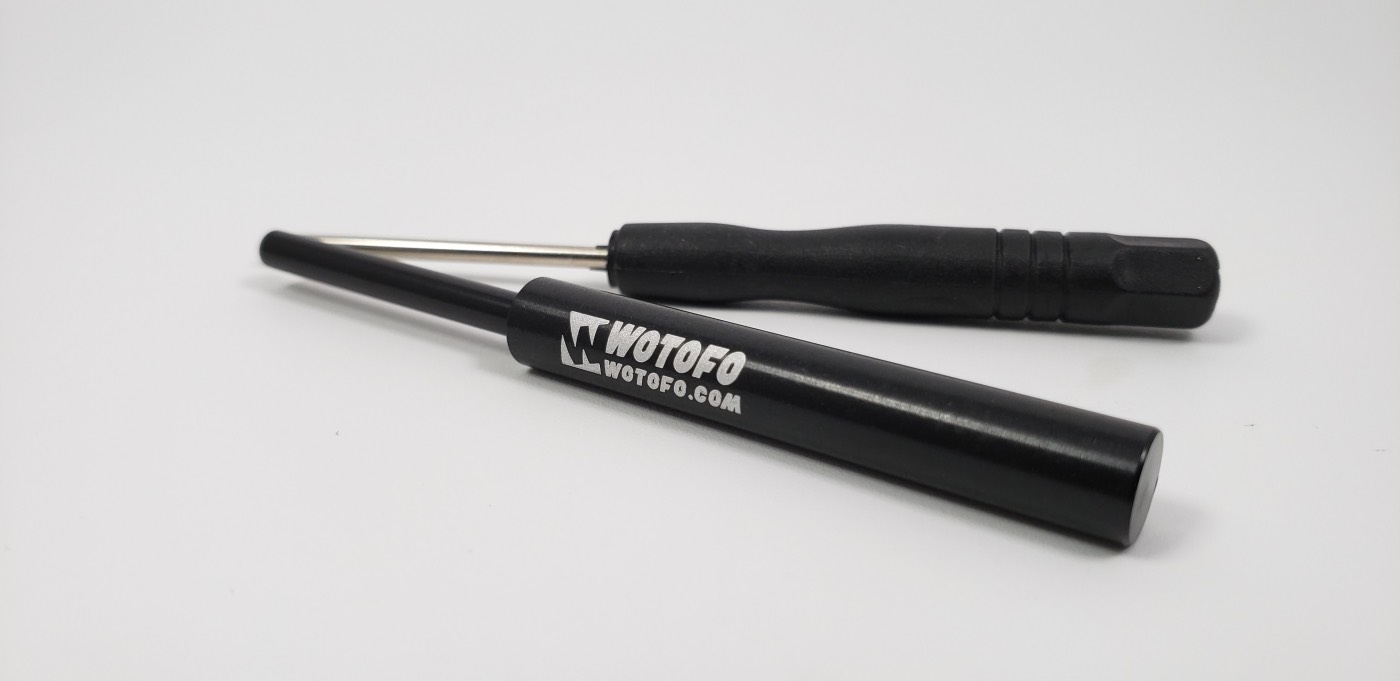
Then you use the skinny end of the mesh tool to push up against the bottom of the strip to make sure it’s evenly rounded. And I always like to fire it just to make sure it’s installed correctly and to make sure it’s clean.
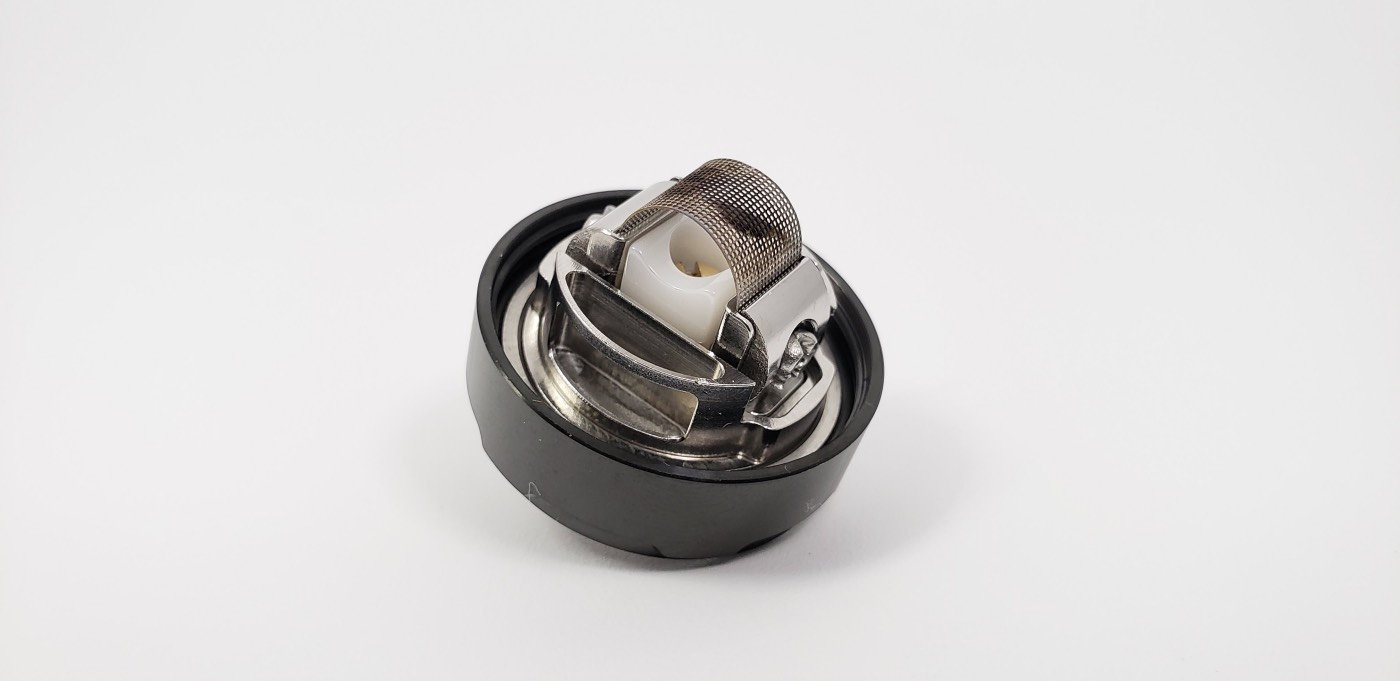
And you’ll see that with mesh, it fires damn near instantly. It’s another one of the great things about mesh. You’ll get really fast ramp up on this.
Rather than the original mesh strips that Wotofo created for the RDA, the Unity comes with nexMESH OFRF strips, which perform much better than the original strips in terms of flavor and ramp up time. They can also handle higher wattage at a recommended wattage of 60-70 watts.
And of course, you’re not restricted to using only mesh strips. You can put regular coils in here too and it’s just as easy to install.
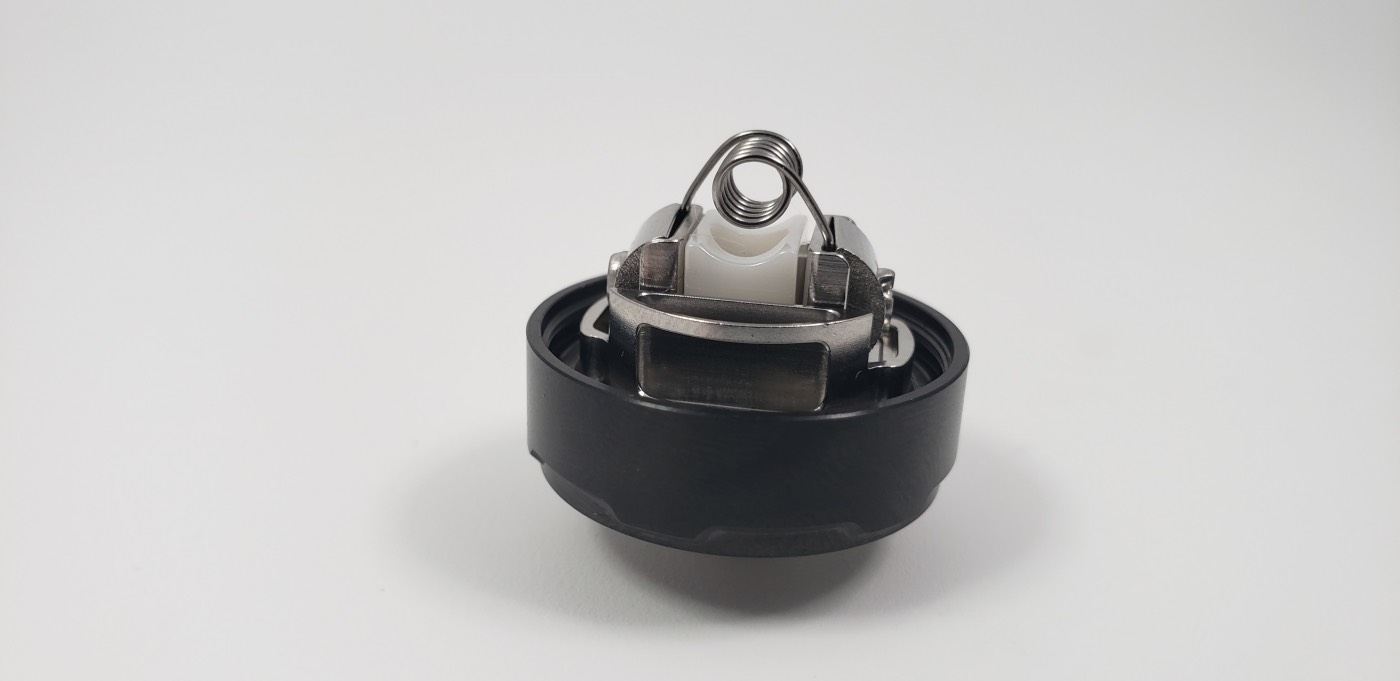
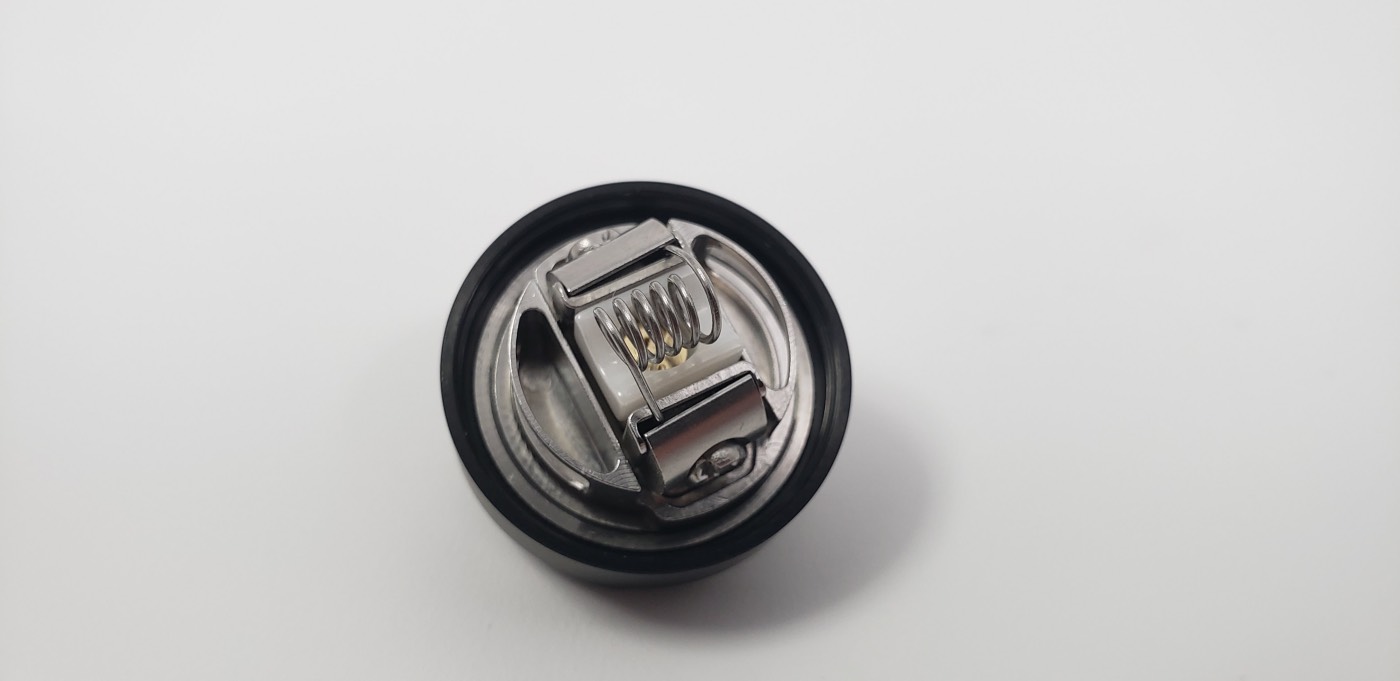
If you’re using a regular coil instead of mesh, you want to cut the wick as short as you would on any RTA.
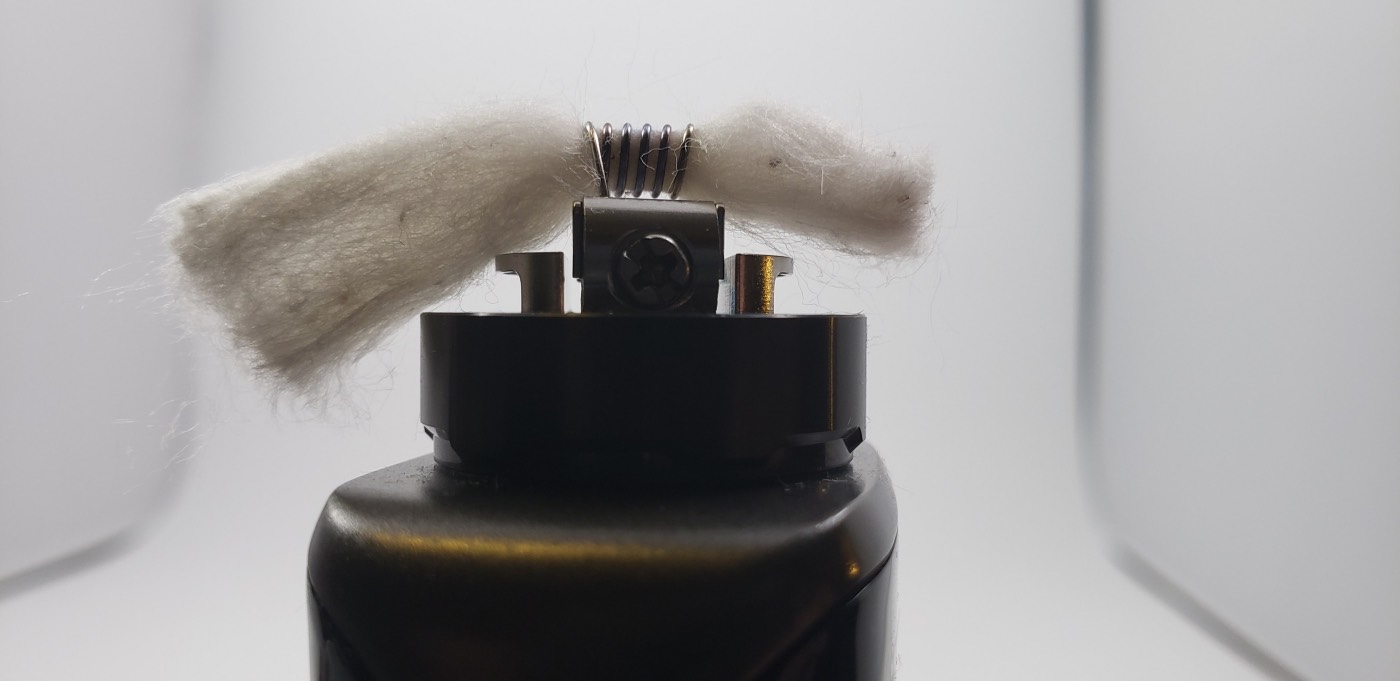
Cut it just short enough to reach the bottom of the wicking channels and don’t stuff it too full of cotton.
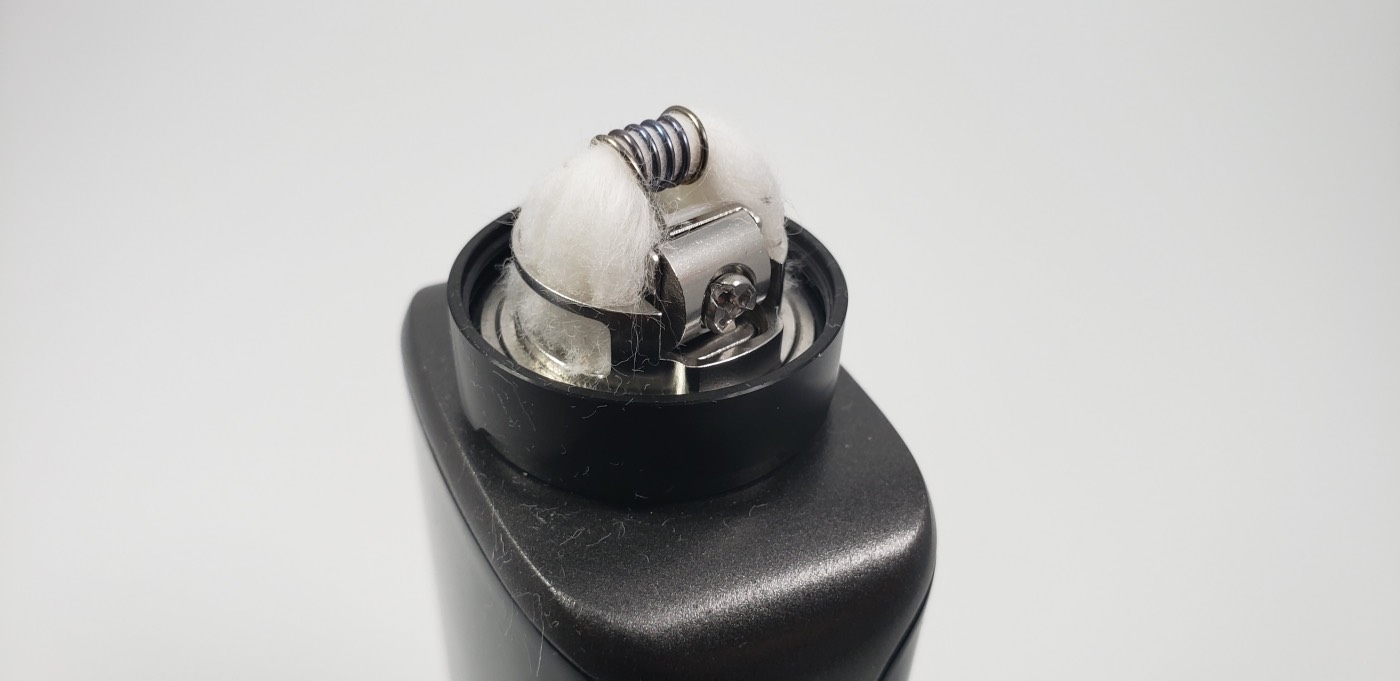
Wicking the Unity RTA
Wotofo includes everything you need to get the Unity built a couple of times.
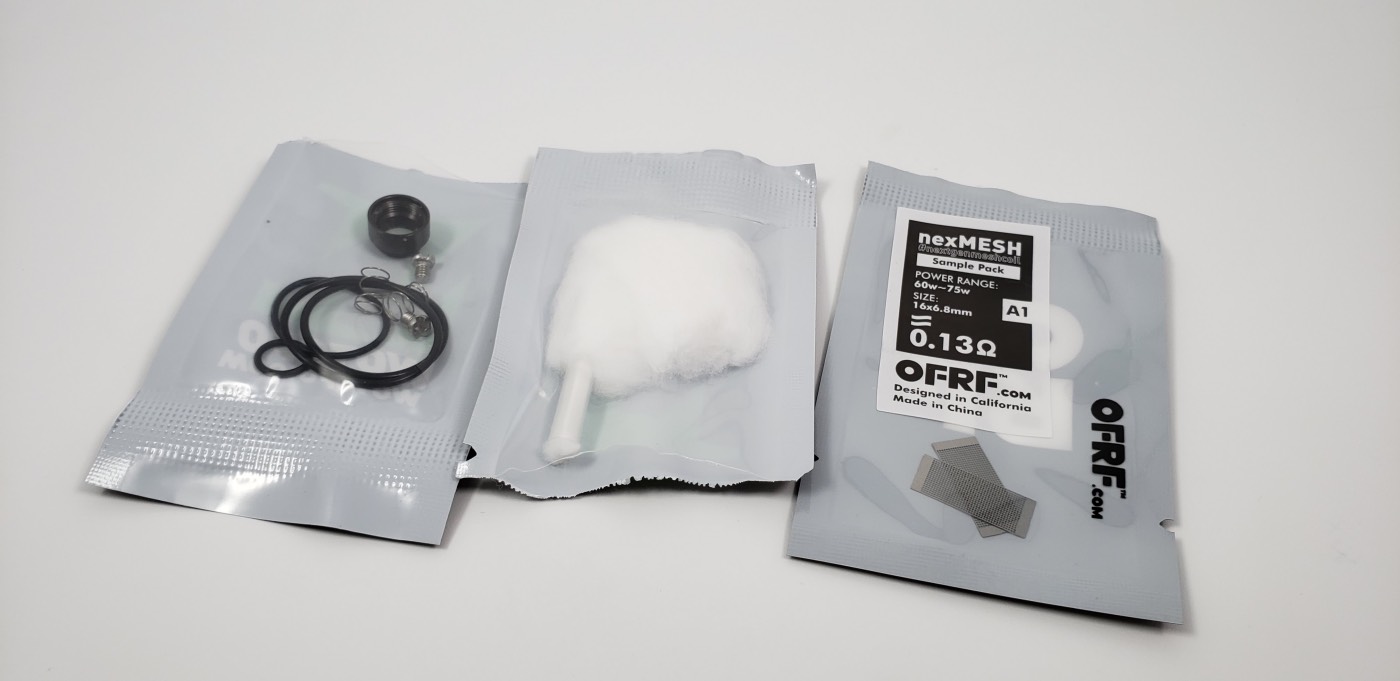
The key feature of the original Profile that made it work so well was the spring-loaded piece in the middle of the deck. And of course it’s on the Unity too. This piece pushes the cotton up into the mesh strips, which makes sure that the cotton has full contact with the coil. It’s not a really strong spring, but it puts just enough pressure on the cotton to mostly prevent dry hits. And it actually seems a little stronger than the spring on the RDA.
To wick the deck, you want to stuff it with cotton. One of the common problems that people had with the RDA is that if it wasn’t wicked tight enough, the cotton would collapse, the mesh would get a hot spot where it wasn’t touching cotton, and then you’d get a flame. That’s definitely something you don’t want happening to you while taking a hit. That same thing will happen here, so make sure that the cotton is in there tight. If you use the included cotton, you should be fine. If you cut and measure your own cotton, you need to try to make sure it’s somewhere around the 6mm diameter of cotton that comes in the package. And honestly, even the amount of cotton Wotofo includes is a bit much. You can trim that down a bit, but you still want it thick under the coil.
Once the cotton is in, there’s a special method of cutting the cotton. Wotofo included a useful diagram in the user manual that shows how to do it perfectly. So you cut it an angle so that it’s thin at the top and wide at the bottom. It’s similar to the pancake method that Wotofo recommended for the RDA except now you leave these little tails at the bottom so that wicks upwards. This makes it so that you don’t have to stuff a ton of cotton into the wicking channels. I cut a little more off than Wotofo recommends and I think it wick great.
One new feature on the Unity deck is that it has what Wotofo calls bi-level liquid feeding ports. Wotofo says that this provides non-stop flow to prevent the chances of getting a dry hit from the wicks not feeding fast enough. I’m not sure if that’s actually doing anything, but I’ll take their word for it.
When the build is all set, you line up the tabs on the chimney with the slots on the deck, screw it together and fill it up. One thing to note is that you can’t screw the tank onto the deck while it’s on a device. The deck has to be off of a device to screw it together. And that’s because the 510 pin spins with the build deck. From what I understand, that has something to do with how the airflow is designed. It’s a little annoying to deal with when you put a new build in the tank, but it’s not a big deal in my opinion, especially since most of the time you’ll be refilling the tank, not rebuilding it.
Flavor and Performance
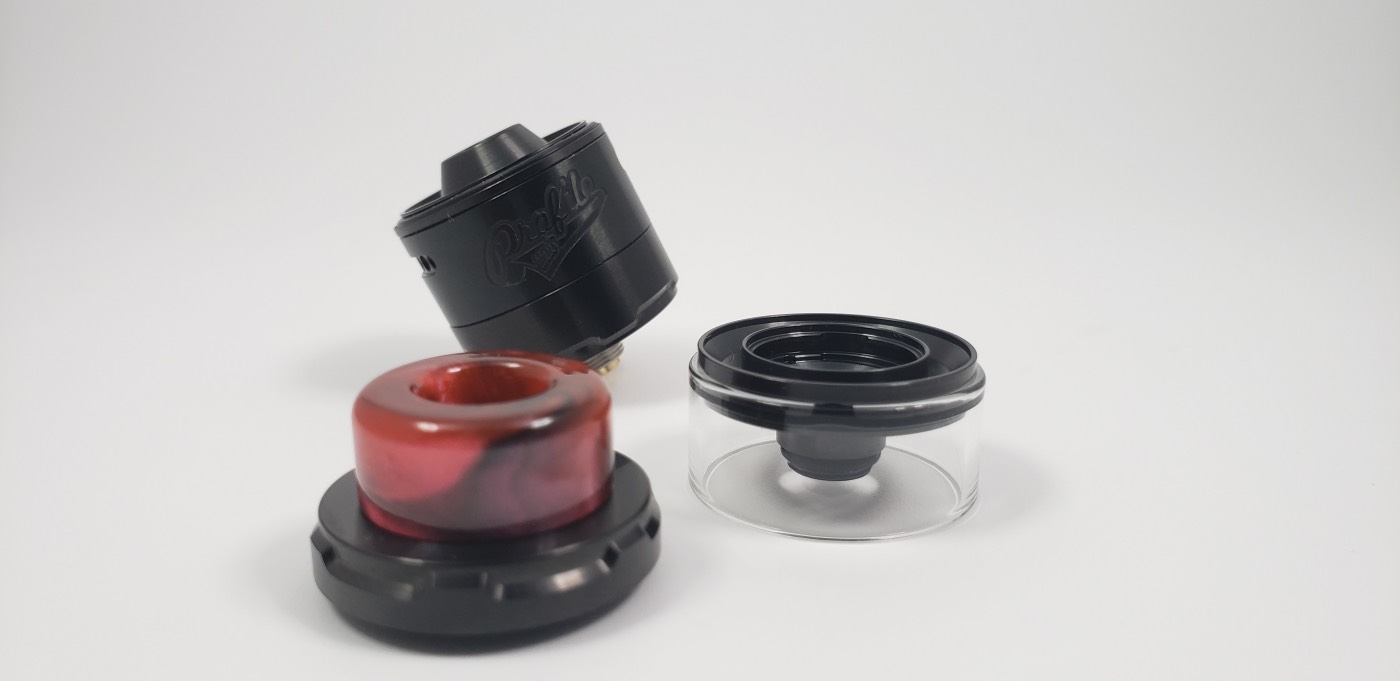
As for the performance of the tank, it works really well. I don’t get any spit back, I’ve never gotten a dry hit, you can get a ton of vapor if you want, and the flavor is really good. I was wondering how well the flavor would compare to the OG RDA and I’m surprised at how good it really is.
With the airflow wide open you get a ton of airflow for big hits and if you close it down to just one airflow hole on each side, you can get a really restricted lung draw. You can’t do tight draw on this, but that’s now what it was designed for anyway. At 70 watts, it seems a little warmer than the RDA, but it’s still somewhat cool to me. You can take it up to 90 watts and it’ll work, but that’s pushing it and you risk a dry hit. It’s seems to work best at the recommended 70 watts or even 75 watts.
Final Thoughts
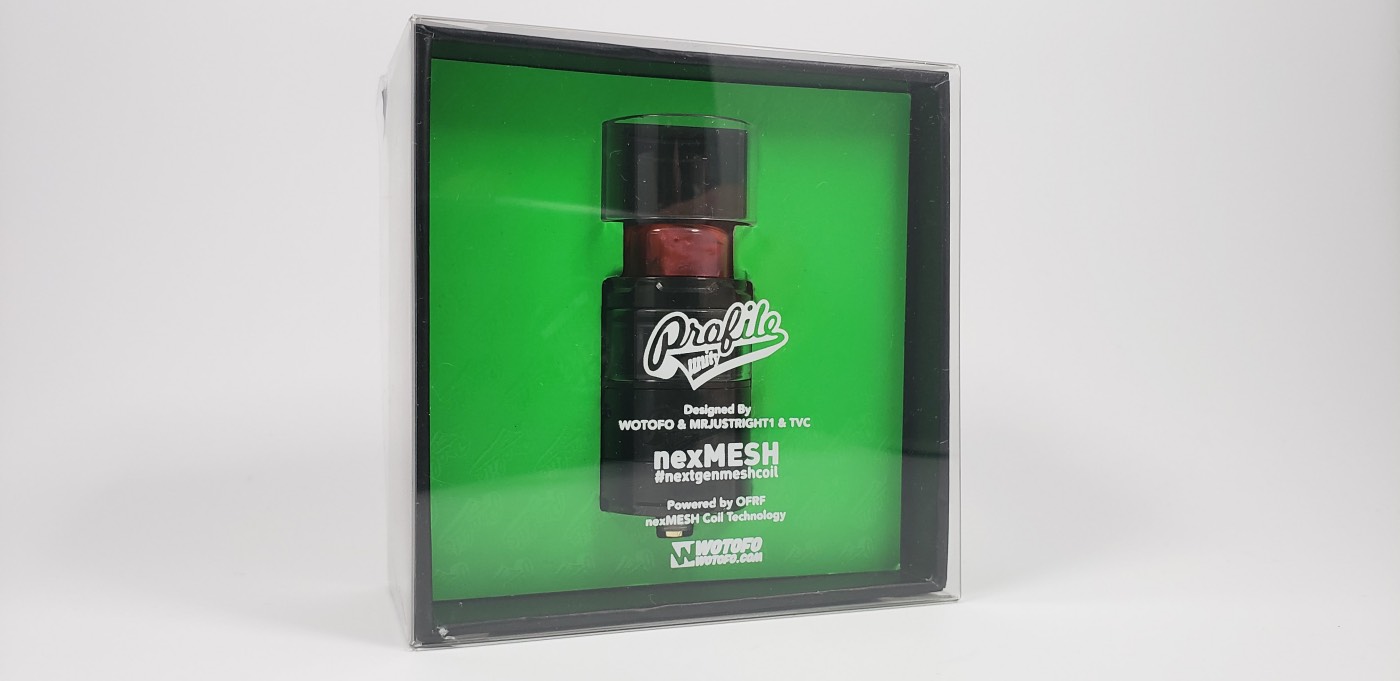
That’s about it for the Profile Unity. There are some very minor things that bother people, like not being able to screw the tank onto the deck while it’s on a device, it produces a mostly cooler vape, and the e-liquid leaks just a little around the airflow holes. But overall, this is an awesome RTA. It performs great, it’s easy to build, and the flavor is amazing. In my opinion, it’s a must-own tank.
This was sent to me from Wotofo, so if it’s something you’re interested in, you can get it from them for $39.99 (affiliate).

